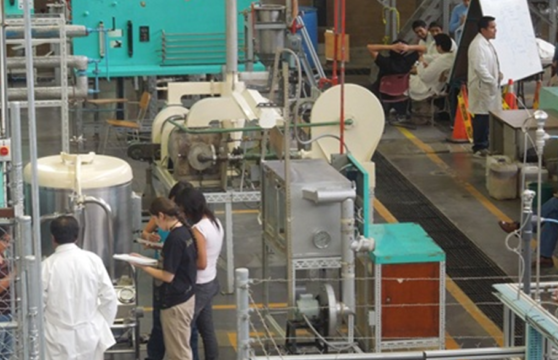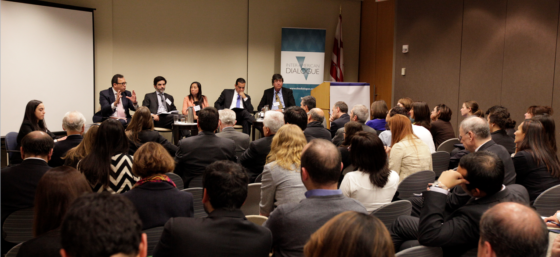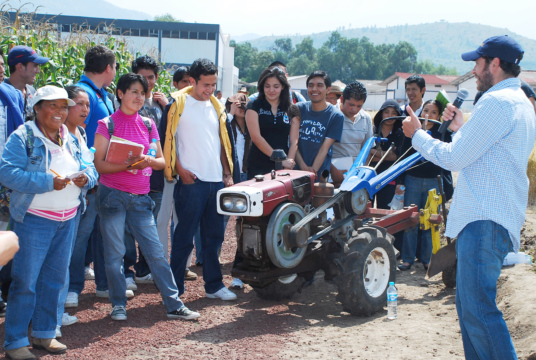
Where is all the Professional Talent in Latin America?
Latin America leads the world in talent shortages, and that the problem is getting worse
This post is also available in: Spanish
An interview with Thomas Voigt (TV), Executive President of the Colombian-German Chamber of Industry and Commerce, by Belén Cumsille (BC), Program Associate of the Education Program at the Inter-American Dialogue
BC: What is the Duale Hochschule Latinoamérica program and what motivated its creation?
TV: The program started as a cooperation between the local chambers of commerce in Bogotá and Armenia (both in Colombia), the GIZ (GTZ in those days) and the Colombian-German Chamber of Commerce in the late 1990s. Nowadays, the program is almost self-sufficient as universities pay an annual fee and receive no outside funding with the exception of an expert financed by the German Ministry of Economic Cooperation and Development. The DHLA network consists of nine universities in four different countries: five in Colombia, two in Ecuador and one each in Peru and Mexico. The latter, Universidad Interamericana para el Desarrollo (UNID), has 49 campuses in the country, 12 of which offer dual programs. Altogether more than 2,000 ‘dual’ students are currently enrolled at these universities. Students usually spend three months in class and three months in a company.
BC: How is the admission process for students?
TV: Each university handles students’ admission individually. Usually, the process includes a comprehensive assessment (interviews, group exercises, presentations, oral exams, among others) and psychological tests, but it varies by university.
BC: Who is involved in the program’s design and implementation?
TV: Curricula are based on the curricula of our partner university in Germany, the Duale Hochschule Baden-Württemberg (DHBW), but are adapted according to local circumstances/requirements, of course. One fundamental difference between traditional higher education and dual study programs is that companies not only have influence on the curricula but are constantly involved in the students´ education. During their time in the company, students usually design a project that matters to the company or solve a specific given problem of the company; many times the task is implemented at the operational level afterwards.
BC: How do you define learning competencies/objectives? How do you measure learning or competency development?
TV: During the practical phase, students design a project or solve an existing problem of the company, which is collectively graded by both the company and the university. The project must be described in a paper (according to scientific standards) and presented to professors and company representatives. Learning objectives in the company are defined and agreed on as the subject matter of the contract between company, student and university, and reflect the content of the preceding theoretical phase. Thus, if Human Resources, for example, were the focus of the theoretical phase, the student would subsequently be working/learning in the HR Department of the company.
BC: Do the national authorities recognize DHLA degrees?
TV: All degrees are recognized as national degrees in the respective country, which correspond to a Bachelor´s degree.
BC: What programs do you offer using the dual system model and how long do they last? Do you plan to expand it to other areas and countries?
TV: As the founding organizations of the network are chambers of commerce, emphasis is placed on business administration, but there are engineering programs (e.g. industrial engineering), as well as business informatics and tourism. It is anticipated that more engineering programs will be offered in the future. DHLA is constantly looking for innovative universities that would like to join the network. Programs usually last 7 semesters in business administration and 8 semesters in engineering programs.
BC: How do you engage companies and employers to participate in the program? What are companies’ responsibilities?
TV: Engaging companies in the program can be difficult as one principle of the dual system is that the students receive a salary while attending university. Companies in Latin America in some areas (e.g. engineering) still have comparatively few problems finding new professionals (in contrast to Europe); hence, understanding why paying a promising young student to attend university represents a good investment in the company´s future is perhaps not as evident in Latin America as it is in Germany, where finding qualified professionals has become difficult. We work with cost-benefit analysis showing the long-term benefits of the concept; testimonials of students and training companies have also proven to be useful. However, the financial contributions of the companies vary – some pay little or nothing, many pay students the minimum wage, and others cover (parts of) the tuition fees.
There is no obligation either for the student or for the company to continue working together after graduation, but the fact that many students do continue working for their training company constitutes another major benefit of the dual concept for both students and companies.
BC: Who are your students?
TV: Given the fact that the program is very challenging and demanding, with much less vacation than other students have, students of the program usually are somewhat more performance-oriented than others. In addition, given the fact that companies usually contribute to the costs of the education, the dual program provides an opportunity for high school graduates from low-income families to receive a high-quality higher education.
BC: Do you have any information on results or impact of the program? What information do you use to evaluate the program?
TV: So far, almost 2000 students have graduated from the program. Impact of the program is evaluated as part of our quality management system (the program is ISO 9001 certified). Graduates are interviewed six months and 18 months after graduation. Questions include salary, employment status and promotions, among others. According to these evaluations, 85% of the graduates consider their current status as either good or very good. Nearly all students find a qualified job after graduating. Starting salaries are on average higher than those of graduates from traditional universities. There are no significant deviations among the four countries.
BC: According to your experience, what are the main problems or challenges to implement dual programs in Latin America?
TV: Notwithstanding the fact that there are approximately 1000 companies in the DHLA network at the moment, the biggest challenge is finding more companies that are willing to train dual students and who are convinced this is an excellent investment in the company´s future. It can be challenging for traditional universities who offer dual study programs for the first time, as the differences are significant. To this end, the DHLA-network offers extensive support not only in the initial phase of the program implementation, but throughout.
To obtain more information about the DHLA network, visit the webpage www.dhla-online.com (Spanish/German) or email Peter Hirsch (peter.hirsch@ahk-colombia.com)
Photo Credit: Universidad de Sevilla / Flickr / CC BY-NC 2.0
Latin America leads the world in talent shortages, and that the problem is getting worse
Why expenditure on education in Latin America has not translated into higher productivity levels.
The current state of Latin America’s labor market presents opportunities for innovation in skills development systems.

